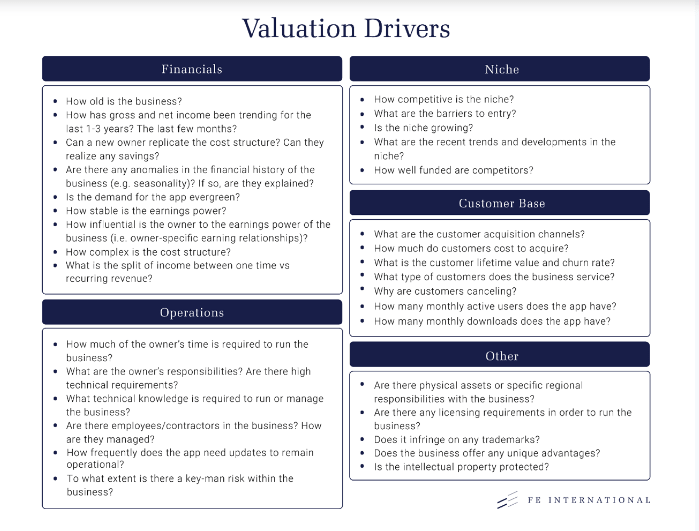If you are new to mobile marketing and you want to define your mobile app audience, first of all, congratulations, you are on the right track! Secondly, the target market is a very basic term that’s used in marketing a lot. But if you are new, let’s start by describing exactly what it is first.
The target market is a term used to describe the process of determining “the right audience of your brand” in the marketing field. The target market, which is an important concept in digital marketing, can be defined as “the people or groups your website/app wants to address”. In other words, you can show all the people you see as potential customers as a “target market”. And considering the mobile world is enormous, the target market for mobile apps change tremendously.
Customer is the center of everything in marketing and your mobile app audience is the most important part of your mobile app marketing strategy. After you develop your mobile app and make it available to app stores, you may think your work is done. However, it is just the beginning! And it is not enough to just develop an application and present it to users. You must communicate with your target audience, understand them, market your app to them in the platforms they use and love, take into account the suggestions and opinions of the people using your application, and revise your application in line with their needs and wishes to provide a better user experience.
With the correct target market selection;
- You can better understand the demands and needs of the mobile app audience, and you can even develop your app’s position and competitive advantage better.
- Since you have determined your target market, you will ensure that your marketing budget is used more efficiently.
- By bringing your customers together with relevant content or campaigns, you gain customer loyalty and thus gain a competitive advantage against your competitors.
Now let’s go over how to define the target market of your mobile app.
Conducting Market Research
Market research allows apps to see the target market’s potential. Good market research helps a mobile app predict the demand for its products or services and how well the app will perform in the target market.
Market research has many aspects; collecting, analyzing, and interpreting information about a market, about a product or service to be offered for sale in that market; and about information about the past, present, and potential customers for the product or service; research of the characteristics of your business’s target market, spending habits, location and needs, the industry as a whole, and the specific competitors you encounter is called marketing research.
It provides relevant data to help solve the marketing challenges that an app is likely to face and becomes an integral part of the business planning process for every target market for mobile apps. In reality, strategies such as market segmentation (identifying specific groups in a market) and product differentiation (creating an identity for your mobile app that differentiates it from competitors) are impossible to develop without market research.
For the best market research:
- Get statistics and insights about your target
- Check the trends of your industry and target
- Search for the questions on popular forums related to your niche or industry
Identifying Your App’s Business Value
To target and attract users, you have to have a crystal clear view of the advantage your mobile app presents.
Evaluation of a clear value proposition of your mobile app should be arrived by answering certain questions concerning your mobile app audience. You can start by answering these questions:
Defining Your Audience Factors (Demographics, Location, Behavior, Device, etc.)
When determining your target audience, the most important factors that you should pay attention to will be segments such as:
- Demographic characteristics,
- Demography identifies potential customers based on criteria such as age, gender, family status, income, education, religion, race, and social class. It is the most widely used market segment because these variables are easy to define and measure. To learn more, check out what is location-based marketing!
- Geographical divisions,
- Geographical segmentation aims to group consumers according to where they live. In this way, you can go deep into the state, region, district, city, or even the neighborhood and associate the issues on the agenda of the people in that region with your campaign and make your customers feel more special. For example; you are in the retail business. On the same day, Barcelona is quite sunny; but there is rainfall in London. Then you can send a push notification about the raincoat discount for your customers in London. And for your customers in Barcelona, you can inform them that your new hat collection has arrived at your store and that special gifts for the new season are waiting for the customers in the store.
- Interests and behavior patterns,
- Behavioral segmentation is about the attitudes of consumers towards your mobile app and how they use it. Do people use your app every time or seasonally? Why should people choose your app over alternatives? If you can foresee this information in advance, you can make big gains by making your campaigns and offers from this perspective.
- Their device.
- A piece of must-know information about the target market for mobile apps. Are they iOS users or Android, do they use smartphones or tablets? You have to exist where your mobile app audience is.
Generating Your Buyer Personas
An effective mobile marketing strategy is creating a buyer persona for your mobile app. A buyer persona is a reality-based fictional characterization of your ideal customer who is formulated by using market research or real data about your old users.
For example, Candy Crush attracts many different market segments, therefore has many different buyer personas of the mobile app. The game is played by young children, 20-25-year-olds who commute for school or work, and 35-40-year-old moms. All different buyer personas of a mobile app but they are all important and relevant to the mobile app.
You have to determine the buyer personas of the mobile app before you make any (or any more) important decisions. Choosing which one to target with your mobile ad campaigns is another important aspect to consider, click here to find the perfect audience for your mobile ad campaign.
Doing Competitor Analysis
One of the most important points to consider when determining your mobile app audience is the level of competition in your target market, therefore mobile app competitor analysis. It will be much more difficult for new companies to survive, especially in large competitive markets. In this sense, very large markets with tight competitors have the potential to have negative consequences for your company. You can focus on consumer needs to create your mobile app audience and improve your products based on the knowledge and experience you have gained from these needs in the next process. Researching your mobile app audience and understanding their needs and drives is a must and you can also create your own demand and your own place. Remember that you have the power to create demand itself, with the services and products you create based on consumer needs.
To define your target market, you have to conduct a mobile app competitor analysis and determine which target size you choose. There are many ways you can determine your mobile app’s target audience. Here are the top four target market determination strategies:

Undifferentiated Marketing (Whole Market) Strategy: It is a strategy applied in cases where the whole market is considered to be homogeneous and it is not necessary to choose a certain segment from the market. Plans and applications are made by targeting the entire market. Also called mass marketing. With this marketing strategy, your goal is to reach the largest audience possible and your app’s exposure is maximized. If it is so good, why isn’t everybody using undifferentiated marketing, you may ask. This marketing strategy is chosen when everyone demands the product for the same reason (Commodity items are usually marketed for the masses) and it is not so popular now due to competition and improved marketing research capabilities. Here are some examples of why segmentation is more effective than mass marketing:
- A 2017 survey from Mailchimp found that segmented mail campaigns had open rates of 14% higher than non-segmented campaigns.
- McKinsey’s research states a retailer in Europe who used segmentation techniques saw a 3-5% increase in returns on promoted sales.
- It’s not a secret tactic, customers prefer it too. Research by Epsilon stated that 80% of consumers are more likely to do business with a brand that applies personalization techniques.
Differentiated Marketing (Multi-market) Strategy: It is a strategy that has more than one selected market segment. And more than one product and more than one marketing method are used for each segment. The segments mentioned will enable you to determine the correct target market, to reach the right people within your target audience.
Concentrated Marketing (Single Segment) Strategy: The market is segmented, but only one of these segments is targeted. Different marketing methods are used to target this one market.
Narrow Segment Marketing (Niche Marketing) Strategy: It is a strategy when the target market for mobile apps is with very specific or narrow needs that large businesses do not see as a market worth entering. In other words, they are markets focused on smaller parts of the segmented markets. Product and service differentiation is essential in this less-competitive market.
No matter which marketing strategy you choose, your app’s marketing team must come together to develop a marketing mix tailored to the wants and needs of each segment being targeted.
The mobile app market’s competition may be high, extremely high, but if you put the needs and wants of your target market first, there is nothing you can’t achieve!




